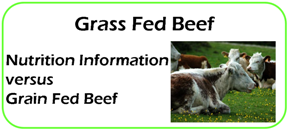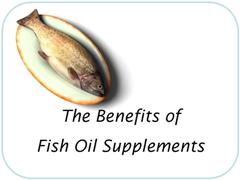|
Grass Fed Beef Nutrition Information versus Grain Fed BeefZara Fagen, PhD, ND Does grass fed beef nutrition really differ from conventionally raised beef? Granted, inhumane treatment, and unsanitary living conditions of mass beef production are enough to make some people turn to local old-school cattle farms for their beef. Add the standardized use of antibiotic regimens in cattle that may be contributing to antibiotic-resistant “superbugs,” and you begin to understand why more and more people prefer cattle free to graze in pastures and raised the way nature intended. While cattle living conditions can vary, and the risks versus benefits of antibiotic regimens is still debatable, here is one scientific reason why grass fed beef is making a comeback: Grass fed beef nutrition profiles are significantly different from their grain fed counterparts in multiple studies, and across multiple breeds, and locales... and they are significantly healthier. You can check-off these health benefits:
Saturated Fat and CholesterolI know, I know. Nobody should be eating red meat. Cholesterol. Heart Disease. Saturated Fat. Right? Wrong. Multiple clinical studies have shown that lean beef, even regardless of grass fed or grain fed, can be eaten interchangeably with skinless chicken or fish to reduce cholesterol levels. Let’s look first at cholesterol. Here are the relative amounts of cholesterol in different meats, showing that beef actually has the lowest concentration: Beef: 73 mg/100g
There is also one study that suggests that grass fed beef is even lower in total cholesterol content than grain fed beef. Now let’s talk about saturated fats, which we are told increases cholesterol. This is partially true. The truth is that there are many types of saturated fats, and only some of them increase cholesterol. The most cholesterol-raising saturated fats are lauric acid and myristic acid. Plus, to complicate things even more, lauric acid preferentially increases HDL levels of cholesterol, thereby improving cholesterol ratios. There is also cholesterol-raising palmitic acid. In contrast, stearic acid appears to have a neutral effect on cholesterol: it neither raises nor lowers LDL or HDL levels. And here’s where it gets really interesting: the amount of saturated fat is not different between grass fed and grain fed beef, BUT the composition of the fat is. Myristic acid, the saturated fat that increases cholesterol most in an unhealthy direction is significantly lower in grass fed beef across four different scientific studies that included four different types of cows. Three other studies (some using the same breeds as the others) showed no significant difference in myristic acid quantity. So at best, grass fed cows have less cholesterol-raising myristic acid, and at worst, there is no difference. Palmitic acid, another cholesterol-raising saturated fat, was shown in four studies to be lower in grass fed beef. Again, there was no significant difference in palmitic acid levels between grass fed and grain fed beef in three other studies. It’s important to note however, that the same studies that showed improvements in myristic acid levels were not necessarily the same studies that showed lower palmitic acid levels. This means that grass-fed beef that is not lower in myristic acid, per se, may still be lower in other cholesterol-raising saturated fats likes palmitic acid. It is believed that the saturated fat content is the same between grass fed and grain fed beef because stearic acid levels are higher in grass fed beef. Remember: stearic acid saturated fat does not raise LDL or HDL cholesterol levels. Therefore, the saturated fat profile of grass fed beef nutrition suggests that it would be less likely to raise serum cholesterol levels compared to grain fed beef by providing more cholesterol-neutral stearic acid. Polyunsaturated Fats: Omega-3’s and Omega-6’s
It’s hard to miss the recent push for people to eat more omega-3 polyunsaturated fats. This campaign is with good cause. Omega-3 fatty acids are believed to be responsible for reducing inflammation, and improving risks for heart disease, arthritis, and more.
In contrast, omega-6 fatty acids increase inflammation. Since both omega-3’s and omega-6’s use some of the same enzymes in the body, they compete for those enzymes. This means that even if both are present, the fatty acid in highest concentration will preferentially be used, thereby affecting the biological effects. It is believed that an imbalance of the ratio between omega-3 and omega-6 fatty acids underlies many of our common health complaints, and especially those complaints whose frequency has increased during recent decades. Interestingly, grass fed beef nutrition profiles and grain fed beef profiles do not differ in their omega-6 fatty acid concentration. However, grass fed beef had a significantly higher concentration of omega-3 fatty acids than grain fed beef in 5 out of 6 studies. The sixth study showed a non-significant trend towards increased omega-3 fatty acid concentrations. Most importantly, the omega-6:omega-3 ratio was significantly improved in all six studies comparing grass fed beef nutrition and grain fed beef nutrition. And we’re not talking minor differences. The average omega-6:omega-3 ratio in grass fed beef was 1.53:1 across all studies, while the average ratio in grain fed beef was 7.65:1. This particular report suggests that healthy omega-6:omega-3 ratios are ideally in the 4:1 range (others suggest an even lower ratio), while the typical American diet consists of ratios somewhere between 11:1 and 30:1! In addition, grass fed beef nutrition information showed higher levels of EPA and DHA in the majority of studies compared to grain fed beef. EPA and DHA are important omega-3 fatty acids for brain health and cardiovascular health, among other things. Whether, and how much beef would meet daily EPA and/or DHA requirements depends on the total fat in the cut, but there are cultures who meet their daily EPA and DHA requirements predominately by eating beef. AntioxidantsBeta-carotene, the precursor to vitamin A is 7 times higher in grass fed beef compared to grain fed beef according to three scientific studies. Vitamin A plays a crucial role in vision, reproduction, bone growth, and cell function. It is important for healthy skin, as well as healthy linings of the respiratory, urinary and digestive tracts. Vitamin E (alpha-totpherol) concentrations are 3 times higher in grass fed beef compared to grain fed beef according to six different studies. Antioxidants such as vitamin E are important for protecting cells against the damaging effects of free radicals. Free radical damage is believed to be associated with a variety of aging issues and chronic diseases from cancer to cardiovascular disease. The antioxidant enzymes GT (glutathione), SOD (superoxide dismutase), and CAT (catalase) are all increased in grass fed beef, as well. Antioxidant enzymes, like antioxidant vitamins quench free radicals, and they do so in way that is particularly useful for preventing DNA damage, and protecting cell function. Other Important NotesGrass-finished is the most important trait for ensuring grass fed beef nutritional benefits. It takes only 30 days on a grain fed diet for the fat and antioxidant profile of beef to shift. Therefore, avoid grain-finished beef if you are making a nutritional choice. Also, make sure your local farmer is not taking cows to slaughter during the winter while they have been on hay feed. Grass fed beef nutrition benefits occur in cattle that have been pasture-fed for at least 30 days prior to slaughter. Grass fed beef contains significantly larger amounts of TVA (trans vaccenic acid) than grain fed beef, which is required for the body to make CLA (conjugated linoleic acid). CLA is another valuable consideration for grass fed beef due to its ability to reduce the development of cancer, and the onset of diabetes. CLA has also been shown to reduce the deposition of fat in humans. The increased levels of beta-carotene can make the fat in grass fed beef look more yellow than grain fed beef. While many consumers view this as an undesirable trait, it is actually a good indicator of the difference in the grass fed beef nutrition profile. Grass fed beef does have a different texture and taste than grain fed beef, in part due to the lower overall fat content, different fat composition, and reduced “marbling.” It is worth finding out how your farmer ages the beef, and looking into grass fed beef recipes and marinating tips. For example, grass fed beef will typically cook quicker. Many farmers who raise the cattle in pasture do so organically. However, grass fed beef does not necessarily mean that the cow has not been treated with antibiotics, or that the pasture has not been treated with fertilizers or pesticides. The only way to know is to talk to your farmer, or buy beef that has been certified organic. Organic or not, grass fed beef nutrition is not likely to be different, but it’s always nice to know what you’re eating. Do you eat grass fed beef? Do you have a great recipe you want to share?
References CA Daley, A Abbott, PS Doyle, GA Nader, S Larson. “A review of fatty acid profiles and antioxidant content in grass-fed and grain-fed beef.” Nutrition Journal. 2010; 9(10). |













